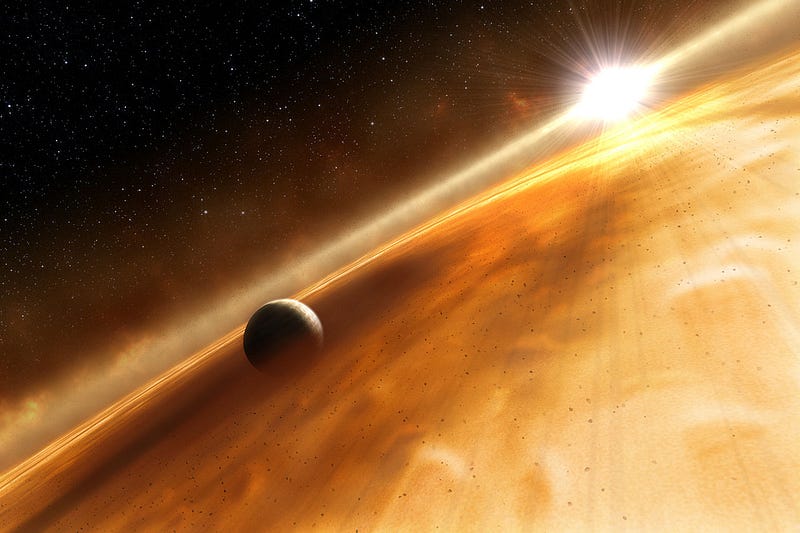Exploring Fomalhaut: A Glimpse into a Young Star System
Written on
Chapter 1: Introduction to Fomalhaut
The star Fomalhaut stands out as one of the most luminous celestial objects visible from Earth. Its brightness can be attributed to its proximity, situated about twenty-five light-years away, and its impressive size, which is approximately twice that of our Sun.
Over the last twenty years, astronomers utilizing Hubble and various other telescopes have uncovered a debris ring surrounding Fomalhaut. In 2008, it was believed that a planet was orbiting this star; however, subsequent observations suggested that this "planet" was likely a cloud of dust generated by some form of collision in the vicinity of the star.

Image credit: ESA, NASA, and L. Calcada (ESO for STScI)
Chapter 2: The Rings of Fomalhaut
Recent studies indicate that Fomalhaut may be in the process of forming a planetary system, making it an ideal subject for investigation by the James Webb Space Telescope. This advanced telescope has recently captured unprecedented detail of the star, revealing a sophisticated arrangement of rings.
Description: This video explores the rings and dust surrounding Fomalhaut, shedding light on the unique characteristics of this star system.
The findings from James Webb suggest that Fomalhaut possesses at least three distinct rings, interspersed with clear gaps. These rings may represent belts of smaller rocky bodies, similar to the asteroid and Kuiper belts found in our own solar system. In our solar system, Jupiter's gravitational influence shapes the asteroid belt, and it is plausible that similar planetary interactions are occurring around Fomalhaut.
Section 2.1: Evidence of Planetary Formation
Interestingly, astronomers have identified a prominent dust cloud on the periphery of the Fomalhaut system. This cloud is hypothesized to be the aftermath of another collision involving celestial bodies within the system, resulting in a substantial debris cloud.
Subsection 2.1.1: The Nature of Fomalhaut
Fomalhaut is considered a relatively young star, estimated to be around four hundred million years old. This youth suggests that its planetary system is still in the formative stages and may share similarities with our solar system during its early years when planetary collisions were frequent. For instance, it is believed that the Moon was formed after a Mars-sized object collided with the early Earth.
Chapter 3: Future Observations
The narrative surrounding Fomalhaut has been nothing short of captivating over the years. With the advancements in technology provided by the James Webb Space Telescope, we can anticipate even more detailed observations of this emerging planetary system. This promises to unveil further insights into the fascinating processes at play.
Description: This video showcases the immense ring of dusty debris surrounding Fomalhaut, captured by the ALMA observatory, enhancing our understanding of this star's environment.
This story was originally published by The Quantum Cat, a regular newsletter covering space and science. Sign up for free today!